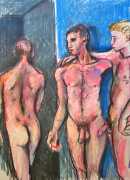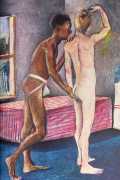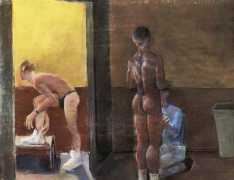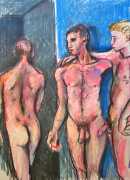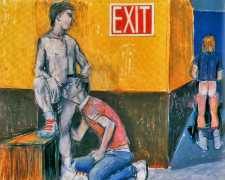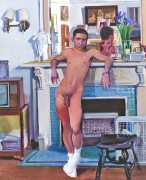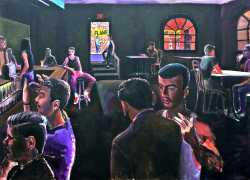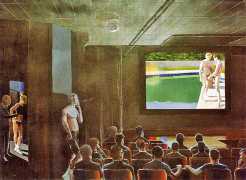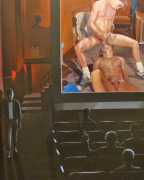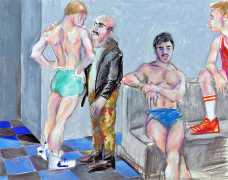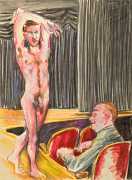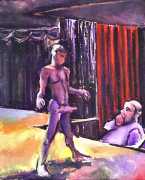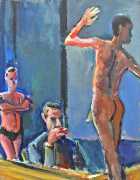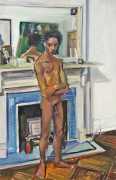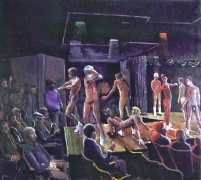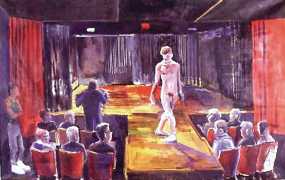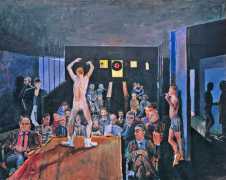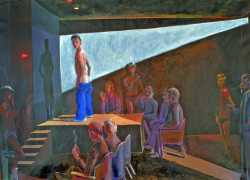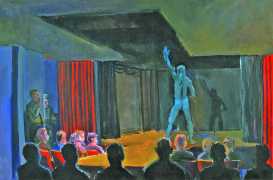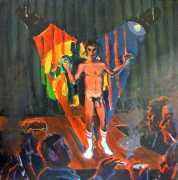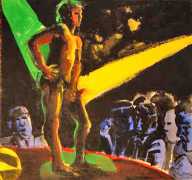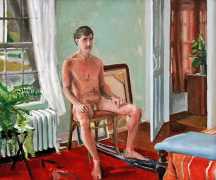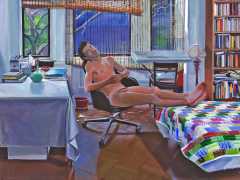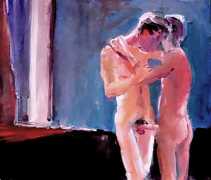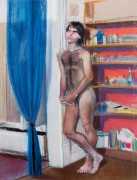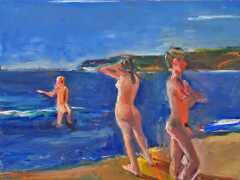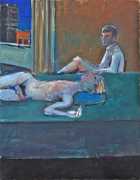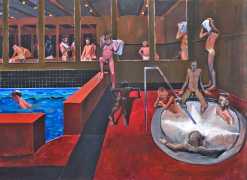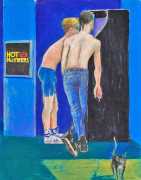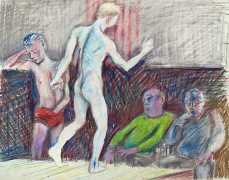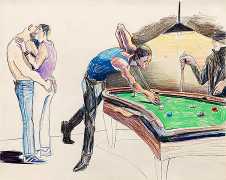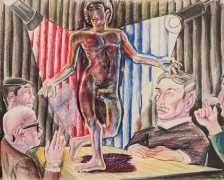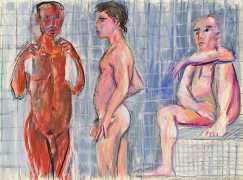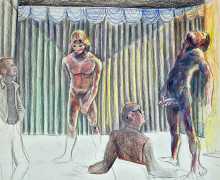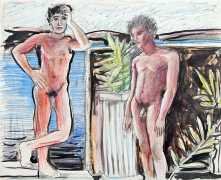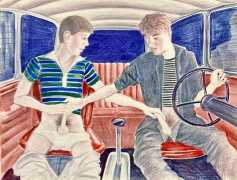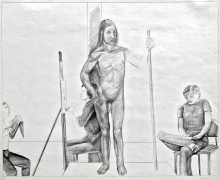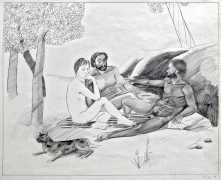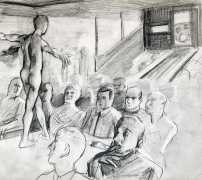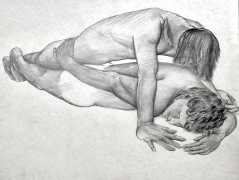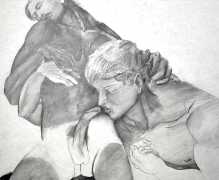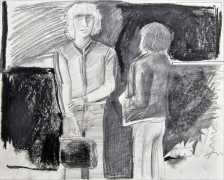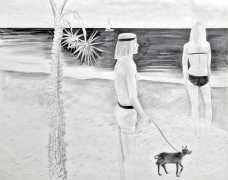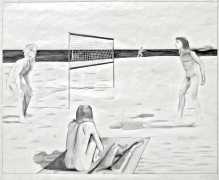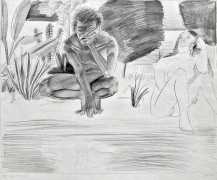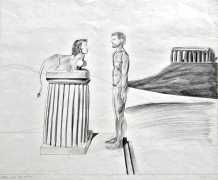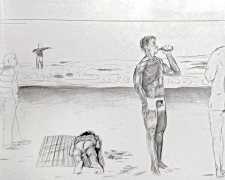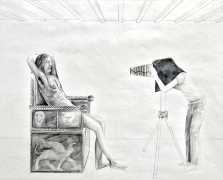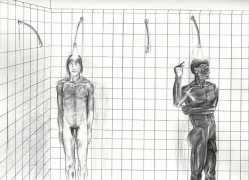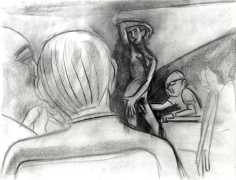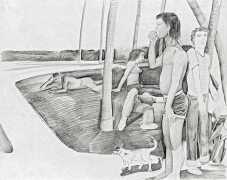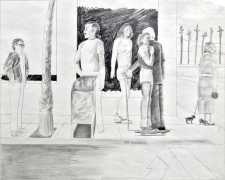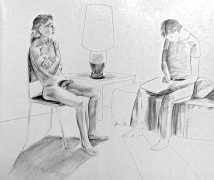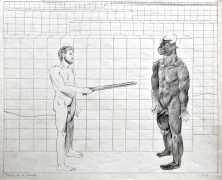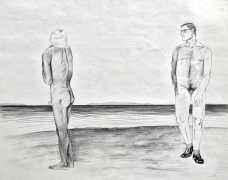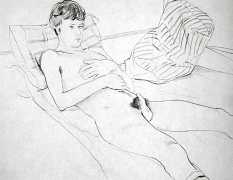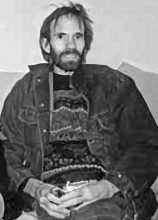 Born in North Hollywood, California, and raised in Santa Barbara, Patrick Angus was a shy boy who wanted to be an artist. With no guidance and only misinformation for reference, he floundered, and although a kind high school art teacher mentored him and let him use his studio, Patrick was afraid to broach the subject of his sexual angst with a heterosexual man.
Born in North Hollywood, California, and raised in Santa Barbara, Patrick Angus was a shy boy who wanted to be an artist. With no guidance and only misinformation for reference, he floundered, and although a kind high school art teacher mentored him and let him use his studio, Patrick was afraid to broach the subject of his sexual angst with a heterosexual man.
In 1974 a scholarship to the Santa Barbara Art Institute led him to discover the work of David Hockney, but when Angus moved to Hollywood in 1975 he discovered that the good gay life does not exist for poor people, ‘unless, of course they are beautiful’. Believing that he was sexually unattractive, he was hopelessly lonely. He made portraits of friends and acquaintances, and recorded with Hockney-like wit the Los Angeles scene around him, though mostly evading overtly gay subject matter.
In the early 1980s he began to paint large canvases based on his personal obsession with erotic loneliness, but his subject matter closed off the commercial art market, and the bourgeois gay establishment disapproved of his depictions of the politically incorrect ‘bad’ gay life, the demimonde of cruising, hustling and loneliness. In despair that his work would never be accepted by the art establishment, Angus resigned himself to obscurity and poverty. He found a room in a New York welfare hotel where he could paint, but he refused to risk more humiliation by attempting to exhibit his work.
As the result of several mentions in Christopher Street magazine, the most literate of gay publications in the 1980s, Angus's work began to sell, and he was particularly gratified that David Hockney bought five of his paintings. In the early 1990s, however, still poor and unable to afford a doctor, Angus collapsed and was diagnosed with AIDS. Facing imminent death, he worried that his life’s work would die with him, but in the last months of his life three solo shows of his work were mounted. On his deathbed in 1992, when he saw the proofs for a book of his paintings, he was able to say ‘This is the happiest day of my life.’
We are very grateful to our Russian friend Yuri for introducing us to the work of this artist, and for supplying most of the images.

